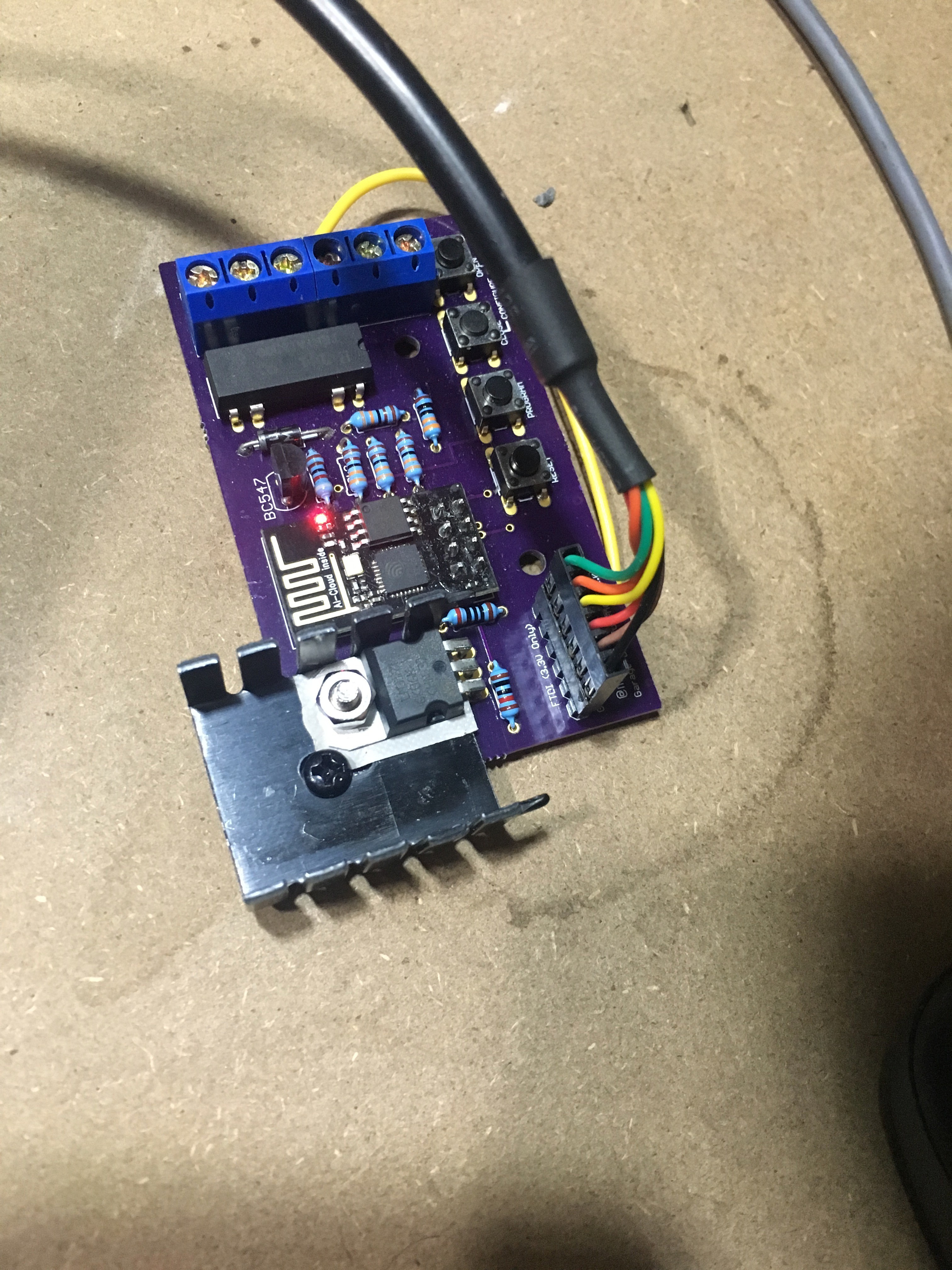Garage Door Opener – TFW you realise you need a heatsink
Up until now I’ve been testing the door opener using a pigtail off the 5V line on the FTDI cable – the board has a LM317T regulator setup to output the 3.3V that the ESP8266 requires. The installation point for this board is a 12V output from the garage door controller. Those of you with a bit more experience with voltage regulators would realise where this is going… I plugged the board in to a 12V supply and noticed that the regulator was getting really hot.
On my lunch break today, I made my way to Jaycar to grab a heatsink. I was thinking about the little clip on ones, which I looked up on the website while I was on the tram, and I came across “thermal resistance” in the specs.
I had no idea what this was, but I knew that it was probably an interesting specification to look up. After googling it, I discovered it is a measure of how many degrees the heatsink will heat up per watt it is dissipating. Some more googling and I found this page around heatsinking the LM317T, which had all the magic formulas that I needed.
So, the power dissipation is:
P = (Vin – Vout) * I
I had two parts of that equation: Vin = 12V input, and Vout = 3.3V, so I needed to work out the power draw of the ESP8266.
More Googling…
I found these (anecdotal) results, which sounded reasonable. So taking the peak current of 320mA, the power is:
P = (12 – 3.3) * 0.32
P = 2.784W
Apparently, the maximum Thermal Resistance the regulator can tolerate is calculated by:
T(rmax) = (60 – roomtemp) / P
So, let’s make roomtemp = 20 (Yes, I’m in Australia, but I’m also in Melbourne, so that is a good average), giving us:
T(rmax) = (60 – 20) / 2.784
T(rmax) = 14.37 C/W
The little clip on heatsinks have a thermal resistance of 30 C/W, which is double what we need.
Boo.
By this stage I had arrived at the store, so went to the heatsink section to see what they had. They had this guy, which has a thermal resistance of 12 C/W. Perfect! It was quite large though, and I knew they board was tight, so I had to be a little creative in fitting it.
Don’t judge me.
I’m a little annoyed that it doesn’t sit on the board properly, but I couldn’t stand it up, as there was limited room above the board, so it was the best I could do without redesigning an new board.
It’ll do.
